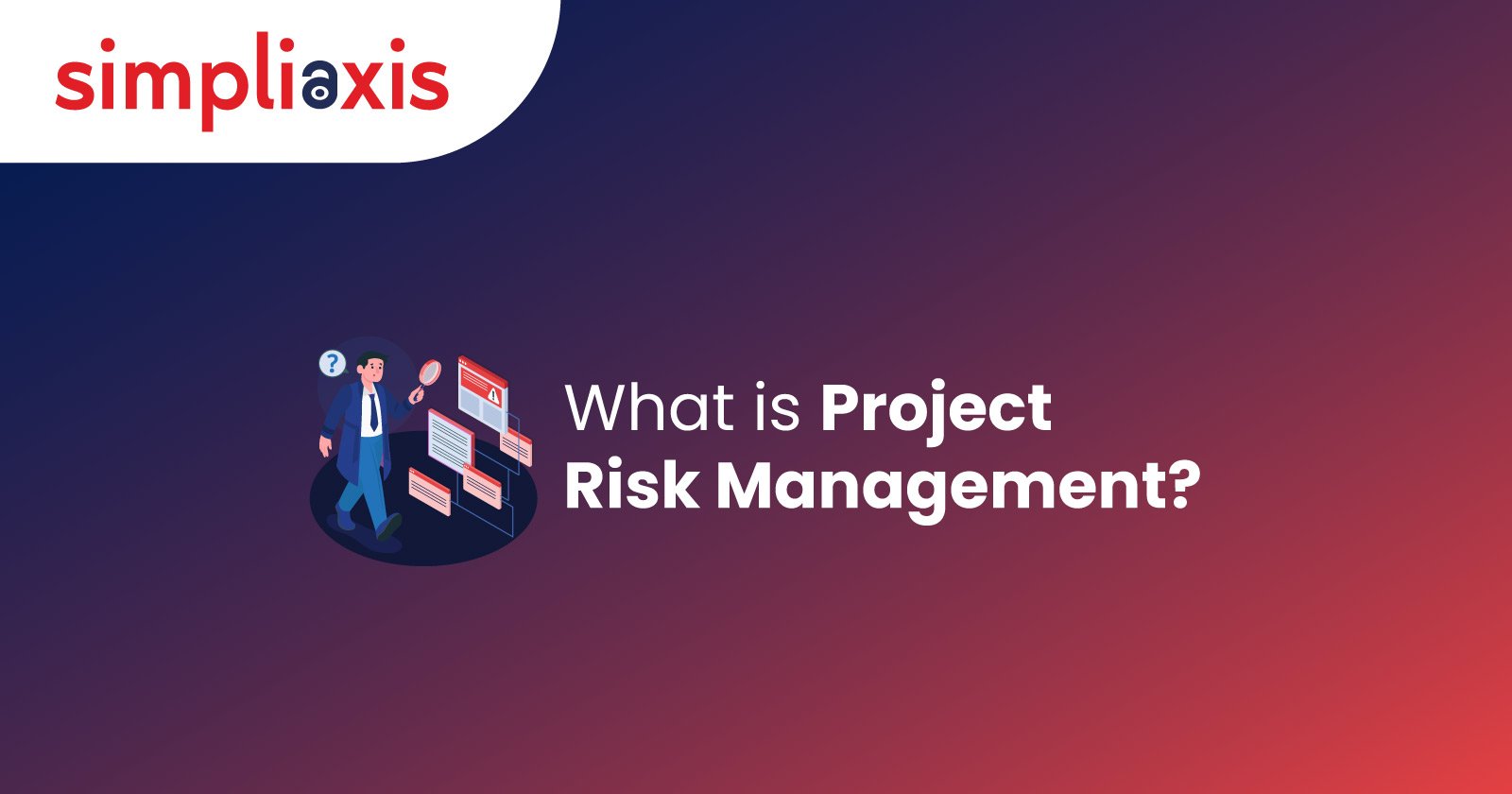Project risk management is a concept that refers to the actions we undertake to minimize the scope of project risks. Every industry experiences risks at some point. So, outline preventive steps beforehand to escape such scenarios. With this concept, you can easily identify risk areas and evaluate key parameters to eliminate any possible hurdles.
As experts say, it is better to overprepare and stay proactive than to experience mishaps during the process. So, always have a backup plan that you can rely on during emergencies. For instance, when you decide to outline a business idea or launch a new line of products or services, always leave room for failures and problems. That will help you to quickly jump into solutions and continue with your daily business operations.
Why Is Project Risk Management Important?
Any business or governing body can experience risk, and that risk can take many forms. There are legal risks, property risks, risks of security breaches, and more. An informed decision towards their reduction is what project risk management is all about. The purpose of risk management is to safeguard business assets or minimize any chances of loss and failure.
Every business has a risk management department or a regulatory body that oversees the operations of the organization to ensure compliance with the established rules. As a project manager, you should collaborate with other heads from the senior management to arrive at a collective decision.
Risk management is an integral part of every organization that proactively mitigates risky incidents with proper planning and strategy. If done right, this upholds the reputation and goodwill of the organization and contributes to its success.
It works as a well-structured framework that encompasses the steps one should take to manage risk. The whole process of project risk management includes:
- Risk identification
- Risk analysis
- Risk evaluation
- Risk management
- Risk supervision
Different Types of Project Risks
Majorly, there are 10 types of risk that a company might experience. This includes:
- Financial risk - A business that experiences debt, defaults in repayment, or has delayed delivery of goods and services, along with poor management, is most likely at financial risk.
- Organizational risk - This is a situation that impacts businesses with potential threats of loss and insolvency. Any form of organizational risk impacts business operations and causes uncertainty.
- Performance risk - Companies that struggle or fail to deliver a time-bound project face performance risk. In simple terms, performance risk refers to a scenario where the outcome of a project is unsatisfactory due to external factors.
- Strategic risk - The risks that a company encounters while executing a strategy for business growth and success are strategic risks. This type of risk often hinders a business’s day-to-day operations, strategy formulation, or course of action.
- External risk - As the name suggests, any form of risk or threat that does not originate within the organization is external risk. This form of threat primarily happens outside; therefore, there is no direct involvement of the employees and the management in the possibility.
- Technology risk - This is again one of those risks that a business faces when there is a major issue due to a technical glitch. Some examples of this include risks that result from failure in the IT operations or other significant departments like cybersecurity, audit, investigation, and testing.
- Cost risk - As the name indicates, cost risk is a scenario where a company fails to stay within the stipulated budget, as outlined at the beginning of the strategy. Situations that can contribute to cost risk within the business include rising costs, non-viable budget, need for additional resources amidst operations, etc.
- Operational risk - Disrupted operations or poor management of resources, techniques, and employee expertise often result in operational risk. One can identify operational risks via IT system failure, financial risk, crashed internal processes, and inadequate benefits.
- Market risk - The risks identified with losses happening due to varying financial market scenarios define market risk. The constant movements and developments in the market parameters affect this phenomenon. Some major examples of market risk include a change in the stock market, altered interest rates, or currency value.
- Quality risk - In project management, one can identify quality risk with the possible threats that directly affect the output of a project. Not only that, but quality risk can also potentially disrupt the standard of the project you are working on and result in raised costs, client discontent, and multiple task revisions.
What Are Positive Risks & Negative Risks in Project Management?
In project management, positive risks are situations where you get to experiment and explore with your decisions and choices to improve project performance and utility. In simple words, you can say that any positive risk offers you the opportunity to improve, so that the company grows. So, do consider working on those areas with your team and collectively head the projects further.
On the other hand, negative risks refer to all the events that eventually turn into threats, hamper your vision for the company, and even affect the success of your business. Some situations that define negative risk are - unrealistic deadlines, technical fault, threat to project delivery, failure in project outcome, or resource crisis.
Benefits of Project Risk Management
Every one of us knows how important project risk management is for any company and how it helps us to attain business goals effectively and efficiently. But for a detailed insight into those benefits, have a look at the advantages of project risk management mentioned below:
- Successful closure of projects with efficacy
- Fewer chances of deviation from the original company goals midway
- Accelerated success ratio with improved planning
- Compliance with the predecided project timelines
- Strongly documented database for risk management
- Scope of risk monitoring and management
- Enhanced responsibility of team members
- Clearly defined project budgets
- Effective communication between team members
Challenges in Project Risk Management
Managing a project, from its ideation to execution, is no less than a challenge, but what if we say there are independent challenges that one encounters while navigating a project?
Well, you read that right!
We have listed certain major challenges that can arise in project risk management, which you should look for beforehand:
- Trouble with risk identification in a project
- Not identifying risk management goals
- Poor or zero implementation of the risk mitigation plan
- Not prioritizing crucial projects and not following a timeline
- Failing to alter the budget on time to escape risk
- Resource limitation during business operations
- Abrupt implementation of new developments in a project
- Issues with software integration and aversion to new changes
- Poor decision-making and unidentified goals in risk management
Risk Assessment Techniques and Steps in the Risk Management Process
To execute a project successfully, we often follow certain tips, techniques, and tactics, which help fulfill the project and track every development stage closely. Since risk assessment includes risk identification, analysis, and treatment, we must consider the following techniques to manage risk:
- Qualitative Analysis (using Probability and Impact Matrices and SWOT Analysis)
- Quantitative Analysis (using Decision Trees, Failure Modes and Effects Analysis)
- Bowtie Analysis
- Reserve Analysis
- Hazard and Operability Studies, other than following additional Risk Management Approaches that Streamline, Prioritize, Centralize, Mitigate, and Supervise potential risk areas.
Steps in Risk Management - Best Practices for Risk Management
Companies follow a streamlined process for managing risk throughout the organization. As the concept of risk management is a continual procedure, business partners and stakeholders play key roles in its planning and execution.
Risk management comprises the following steps:
- Risk Identification - Take note of the potential risks that might impact your business or the project you are working on.
- Risk Analysis - Risk assessment is the next step in the risk management process that helps identify the possibility of risks and their potential outcomes
- Risk Mitigation - As the term describes, risk mitigation is all about identifying risks and looking for ways to diminish them, so that they do not strike your business or projects.
- Risk Tracking - This is an ongoing process to monitor every possible risk that might disrupt the business flow or the project you are working on. By tracking risks, you can look for ways to keep them away from your business.
- Risk Reporting - Every company reports possible risks to its stakeholders beforehand to responsibly take the business ahead. This is a major step to consider for transparency and growth.
Read More: Risk Management Steps
Tools and Software Used in Project Risk Management
There are several dedicated tools and software that help identify and address project risks, no matter what size the business is. These tools and techniques help reduce the scope of threats, disturbances, and delays in any project, come what may.
Some of the popular tools and software that can help in project risk management include:
- LogicManager
- Metricstream
- Risk Register
- Risk Matrix
- Monte Carlo Simulation
- Wrike
- ProjectManager
- Celoxis, Entask, and many more
Artificial Intelligence in Managing Project Risks
Several companies that have a dynamic project management division consistently look for new trends, technologies, insights, and ideas using Artificial Intelligence and other smart software, and introduce workable strategies that drive results.
Today, there are countless options through which you can manage possible risks that you think might approach your business. We have enlisted some techniques that use Artificial Intelligence to tackle projects and address project risks:
- Automated Risk Monitoring
- Risk Identification and Assessment
- Collaborative Risk Management
- Natural Language Processing
- Predictive Analysis
- Generative AI
- CentrlGPT, and many more
How to manage risk with a project manager?
The role of project managers is not confined only to heading a project or presenting it to the clients. It is much more than that. Of all the crucial responsibilities that a project manager carries out, risk management is the most integral.
When a project manager strategizes for risk management, he oversees the following:
- Identifies potential risks
- Refers to previous files to spot similar situations
- Discusses the issue and looks for more ideas
- Studies the crux behind every risk
- Plans to minimize risks
- Monitors the situation carefully to avoid future mishaps
Read More: Qualities of a Successful Project Manager
Conclusion
Project risk management is a mindful approach to tracking possible risks and threats in a project and identifying solutions to mitigate them. Every project undergoes a lifecycle where it gradually completes its course, and project risk management brings into the picture countless tried and tested methods that help deal with these risks effectively.




















